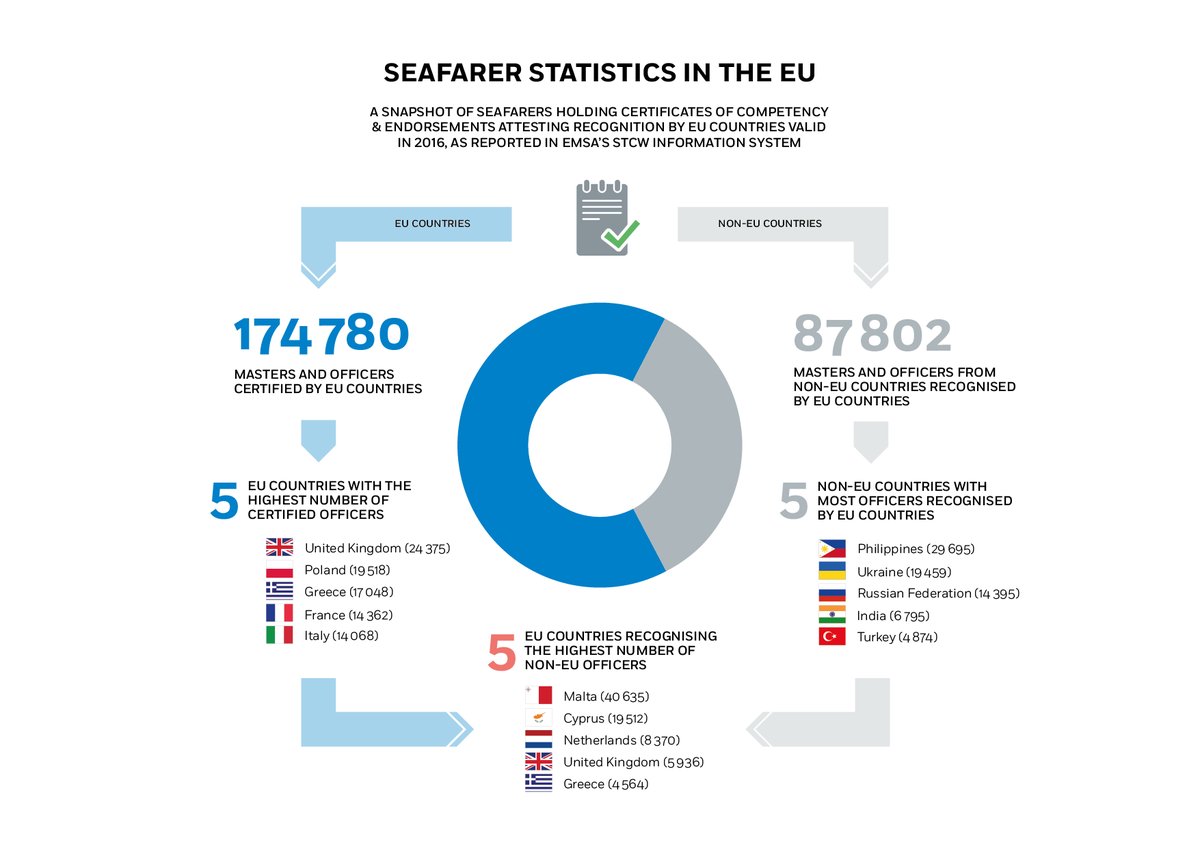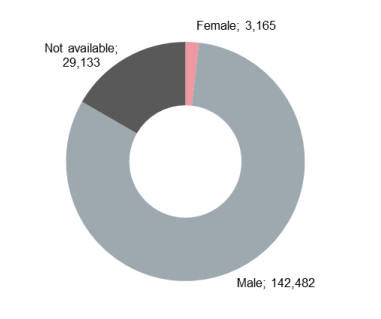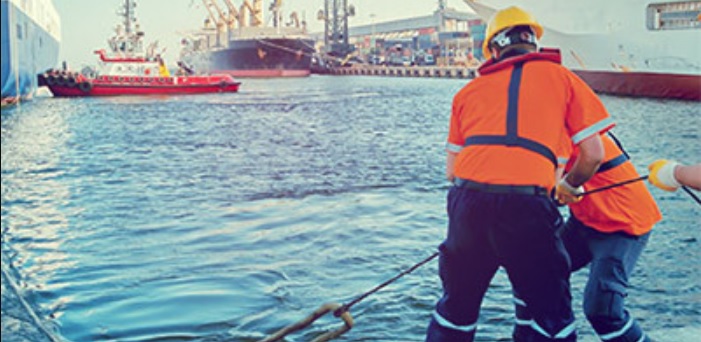EMSA issued a review of Seafarer Statistics in the EU, based on data extracted from certificates and endorsements registered by EU Member States until 31 December 2016 and recorded in the STCW Information system.
The review represents a snap-shot of the European labour market, in terms of the number of seafarers holding valid certificates and endorsements in 2016, aiming to contribute to a better understanding of the maritime labour force in Europe.
[smlsubform prepend=”GET THE SAFETY4SEA IN YOUR INBOX!” showname=false emailtxt=”” emailholder=”Enter your email address” showsubmit=true submittxt=”Submit” jsthanks=false thankyou=”Thank you for subscribing to our mailing list”]
Namely, the data included in the report show that 174,780 masters and officers have valid certificates of competency (CoC) issued by EU Member States, while 87,802 have CoCs issued by non-EU countries. The total number of masters and officers holding CoCs slightly decreased compared to 2015.
At the of 2016, a quarter of a million masters and officers were potential manpower to serve on board EU flagged ships.
However, five EU Member States had the most masters and officers holding CoCs. These are:
- UK – 24,375
- Poland – 19,518
- Greece – 17,048
- France – 14,362
- Italy -14,068

Moreover, the five EU Member States with the most masters and officers holding EU Member State attested Recognition (EaR) were:
- Malta – 55,715
- Cyprus – 26,935
- UK – 12,564
- Netherlands – 11,260
- Portugal – 6,594
In addition, as far as non-EU Member States with the most masters and officers holding CoCs, these were:
- Philippines – 29,695
- Ukraine – 19,459
- Russia – 14,395
- India – 6,795
- Turkey – 4,874

Furthermore, regarding the gender distribution of masters and officers, male masters and officers represented 97.83% of the total number of officers, with female masters and officers accounting for 2.17%.

Finally, the average age of masters and officers with CoCs is 43.4. More specifically:
- 75.76% of the officers with certificates under Charter VII, were younger than 35 years old;
- Masters and officers with certificates under Charter II and Charter III, were evenly distributed throughout 18-24 years of age;
- 54.40% of masters and deck officers and 52.81% of engineer officers were younger than 45 years old.
You can see more information in the PDF herebelow
































































